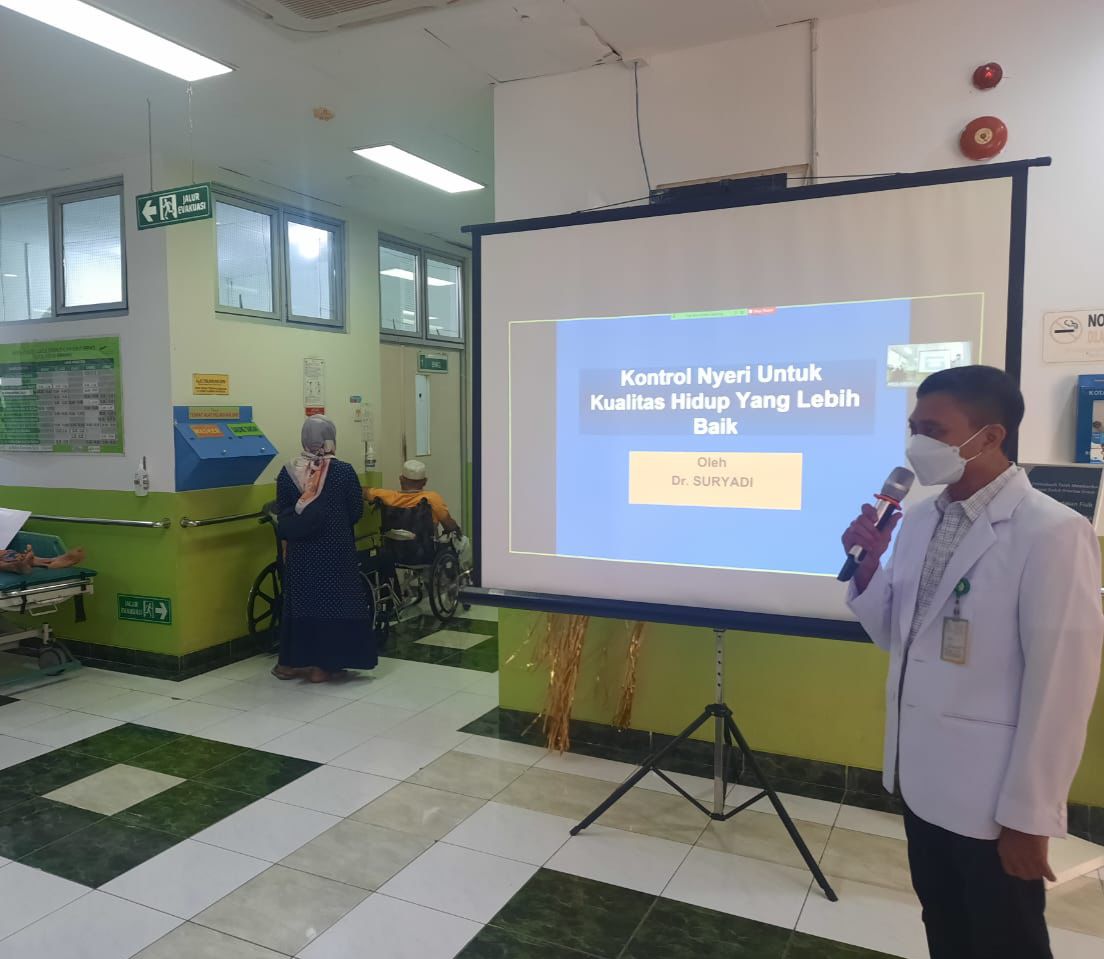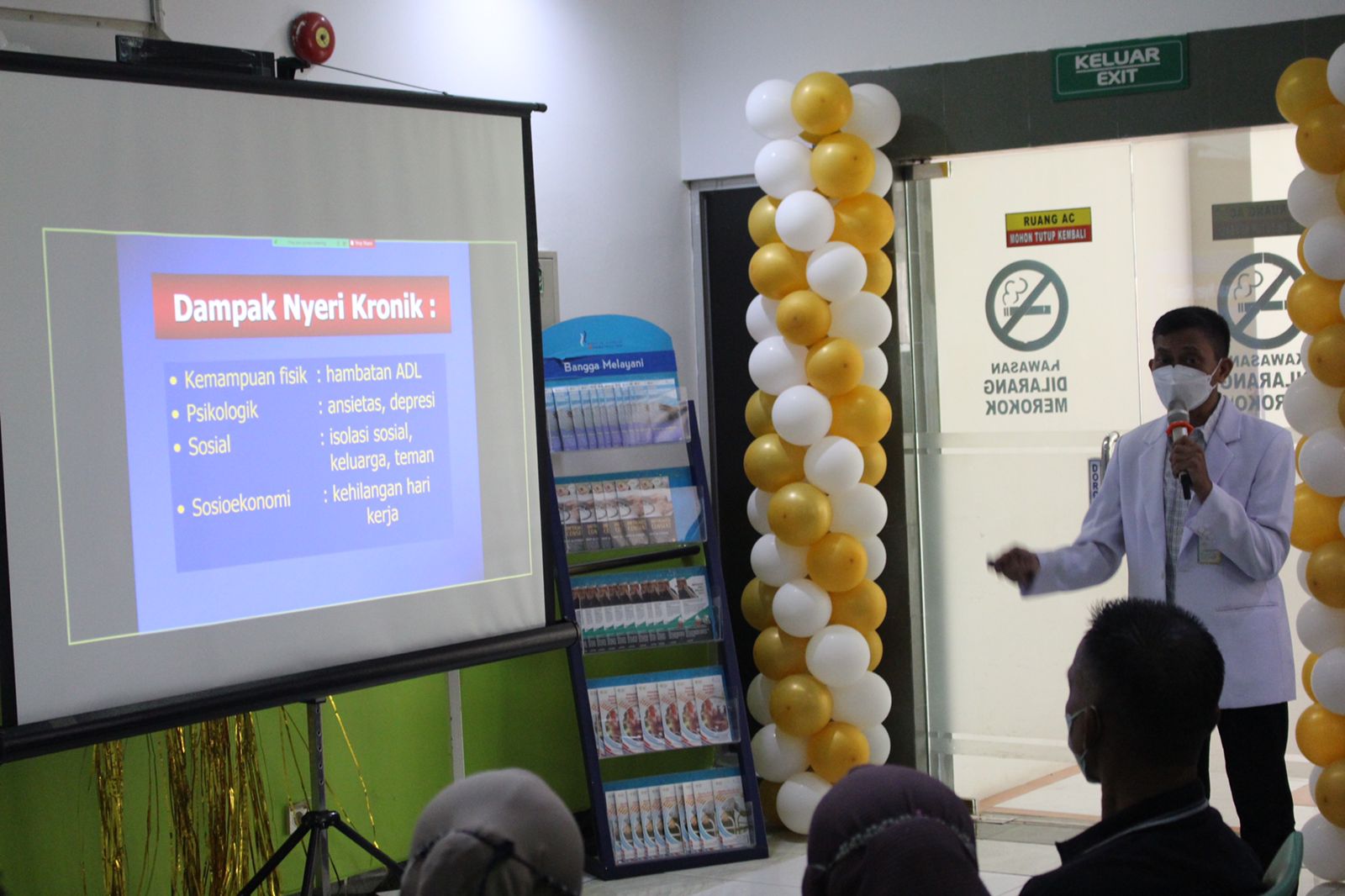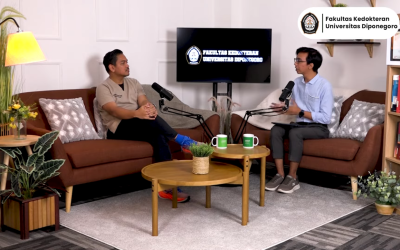NEUROLOGY, SEMARANG – Pain is a general term that describes an uncomfortable sensation in the body resulting from actual or potentially damaging tissue damage. The experience of pain felt by one person can be significantly different in another. Pain can affect daily activities in physical activities or just enjoying life.
KSM Neurology FK UNDIP-RSUP Dr. Kariadi Semarang held a public seminar with the theme “Pain Control for Better Quality of Life” by Dr. Suryadi, Sp.S(K), MSi.Med.

Pain develops as a defense mechanism to protect the body. Without pain, one cannot avoid repeated injury or permanent damage to the body. If not treated and reduced effectively, pain can affect a person’s quality of life. This negative impact has been found to span every age, type, and source of pain in which it has been studied.
Chronic pain is long-standing pain that persists beyond the usual recovery period or occurs along with a chronic health condition, such as arthritis. Chronic pain may be “on” and “off” or continuous. It may affect people because they can’t work, eat properly, participate in physical activity, or enjoy life.

Acute pain is a sudden response to the body being damaged and lasts quite a short time. Pain may disappear once the cause is cured. Initially, acute pain causes sharp pain and decreases in intensity over time. Often the pain is ignored and does not immediately find the reason, so it becomes chronic pain. If it lasts more than 3-6 months and is resistant to treatment, it is classified as chronic pain. Chronic pain coexists with a persistent disease, such as arthritis. Pain can be intermittent or continuous. This can affect a person’s quality of life.
The process of pain is divided into neuropathic, nociceptive, and psychogenic pain. Neuropathic pain occurs as a result of injured or impaired nerve fibers. Pain arises from the response of nerves that receive pain, both from within and from outside the body, and then carry the sensation to the brain. Nerve pain is not always accompanied by severe pain but is almost always accompanied by an abnormal level of pain sensitivity ranging from constant discomfort to unbearable pain. This pain can be stabbing, numbness, mild stimulation triggers pain, and tingling radiating. In addition to peripheral nerve damage, damage and injury to the brain and spinal cord also causes nerve pain.

Acute pain is a sudden response to the body being damaged and lasts quite a short time. Pain may disappear once the cause is cured. Initially, acute pain causes sharp pain and decreases in intensity over time. Often the pain is ignored and does not immediately find the reason, so it becomes chronic pain. If it lasts more than 3-6 months and is resistant to treatment, it is classified as chronic pain. Chronic pain coexists with a persistent disease, such as arthritis. Pain can be intermittent or continuous. This can affect a person’s quality of life.
The process of pain is divided into neuropathic, nociceptive, and psychogenic pain. Neuropathic pain occurs as a result of injured or impaired nerve fibers. Pain arises from the response of nerves that receive pain, both from within and from outside the body, and then carry the sensation to the brain. Nerve pain is not always accompanied by severe pain but is almost always accompanied by an abnormal level of pain sensitivity ranging from constant discomfort to unbearable pain. This pain can be stabbing, numbness, mild stimulation triggers pain, and tingling radiating. In addition to peripheral nerve damage, damage and injury to the brain and spinal cord also causes nerve pain.

Psychogenic pain occurs due to the influence of psychological factors. Certain mental or emotional disorders can cause, increase or prolong the pain. A person with psychogenic pain may complain of pain that does not match the symptoms.
Pain management differs widely because all factors are involved in an individual’s pain experience and the many causes. The approach of several aspects: symptoms and signs found along with supporting results are expected to determine the disease that underlies the complaint of pain. Thus appropriate treatment can be given.





